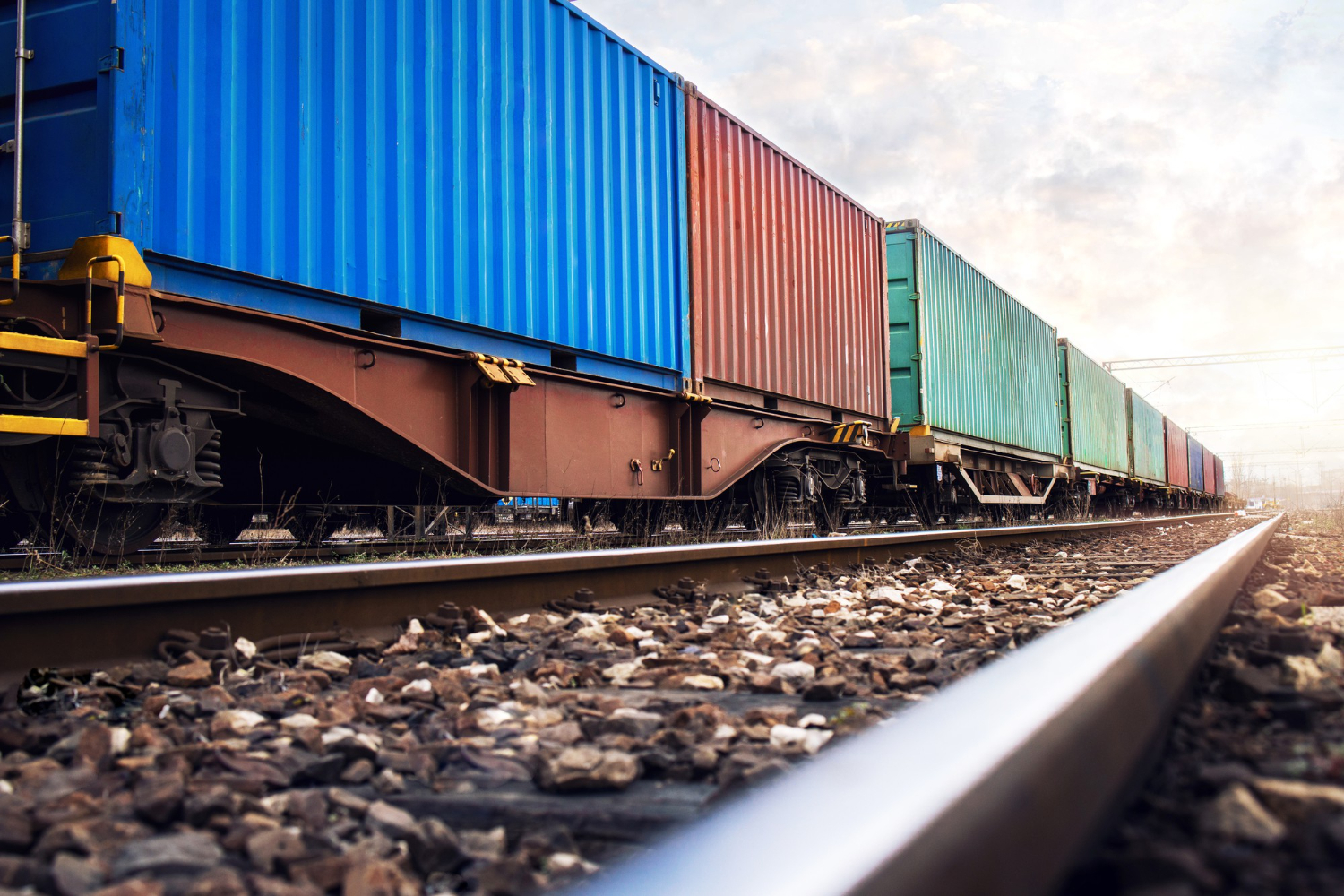Rail freight is playing an increasingly important role in the global supply chain, with over 78 million tonnes of freight valued at over £30bn carried on British railways alone. It offers a reliable, cost-effective, and environmentally friendly solution for transporting goods over land and across continents.
In this guide, we’ll break down how rail freight works, highlight its key advantages, explore how to ship by rail and outline what businesses should consider when choosing rail freight as part of their logistics strategy.
What is rail freight?
Rail freight transport refers to the movement of goods and cargo via train and railways across established railway networks. It includes both containerised cargo and bulk shipments such as aggregates, metals, and other construction materials. As a vital component of the UK logistics network, rail freight transport moves millions of tonnes of goods each year, offering a dependable and sustainable alternative to road haulage.
What types of freight can be shipped by rail?
Rail freight transport offers a versatile solution for transporting a wide array of goods, making it an integral component of modern logistics strategies. Rail services accommodate both Full Container Load (FCL) and Less than Container Load (LCL) shipments, ensuring flexibility for various cargo sizes and types, such as:
- Intermodal Freight: Ideal for containerised goods, intermodal freight allows seamless transitions between rail and other transport modes, such as road or sea, enhancing efficiency and reducing handling times.
- Bulk Commodities: Rail is particularly suited for transporting bulk materials, including coal, aggregates, and chemicals. Specialised wagons are designed to handle these commodities safely and efficiently.
- Automotive and Machinery: The automotive industry benefits from rail’s capacity to move vehicles and heavy machinery. Dedicated car carriers and flat wagons ensure secure and timely deliveries.
- Perishable Goods: With advancements in refrigerated rail cars, transporting perishable items like food and pharmaceuticals has become more viable, maintaining product integrity over long distances.
- Hazardous Materials: Rail provides a controlled environment for moving hazardous substances, adhering to strict safety regulations to mitigate risks during transit.
Key benefits of rail freight
Choosing rail freight transport as part of your logistics strategy offers a range of practical and commercial advantages. Here are some of the key benefits:
- Cost-Effective Rates: Rail provides competitive pricing for both full container loads (FCL) and less-than-container loads (LCL), making it a cost-effective choice for businesses looking to manage shipping costs without compromising on reliability.
- Sustainable Logistics: With significantly lower carbon emissions compared to road or air freight, rail is a greener and more environmentally responsible option, supporting your sustainability goals while keeping supply chains moving.
- Faster Transit Times: Rail freight is typically 45–50% quicker than ocean freight and far more economical than air, offering the ideal balance of speed and affordability for time-sensitive shipments.
- Reliable Service: Trains run on fixed schedules and avoid many of the disruptions faced by road or sea freight, such as port delays, road congestion, or adverse weather, resulting in consistent, dependable delivery windows.
- Flexible Multimodal Options: With a wide network of rail hubs across the UK and Europe, rail integrates seamlessly with road haulage. Whether you’re moving containers or trailers, rail supports smooth transitions across transport modes.
- Enhanced Security: Rail freight benefits from high levels of security. Trains stop only at secure terminals, minimising handling and reducing the risk of theft or cargo interference during transit.
How rail freight works and what to consider
Rail freight transport operates through a well-coordinated network of mainline and intermodal terminals or hubs. Goods are typically loaded into containers at a freight terminal and transported via scheduled services across national or international routes.
When considering rail freight as part of your logistics strategy, it’s important to evaluate several key factors.
- Access to rail infrastructure
- Proximity to terminals
- Volume of goods
- Frequency of shipments
These all play a role in determining feasibility. Rail is most cost-effective for regular, high-volume movements over longer distances. It also offers notable environmental advantages, helping businesses meet their sustainability targets.
For the right cargo and route, rail provides a highly efficient, dependable, and scalable transport solution.
How to ship by rail
Shipping by rail begins with access to the right infrastructure. To use rail freight transport effectively, businesses need to be connected, either directly or via a freight terminal or logistics provider, to the national rail network.
And you don’t need to navigate that process alone! Here at AGI, we simplify every step by connecting your business directly or via strategic freight terminals to the national rail network.
Whether you’re shipping FCL, LCL, or specialised cargo, we ensure you have access to rail-compatible loading facilities, container handling equipment, and a freight schedule that works in sync with your supply chain.
Contact us today
Here at AGI, we specialise in rail freight solutions for organisations across the globe, tailoring a solution to meet your specific needs. If you have a rail freight enquiry, contact us today to discuss your requirements with us, and for all of the latest AGI news, don’t forget to follow us on LinkedIn and Facebook!
